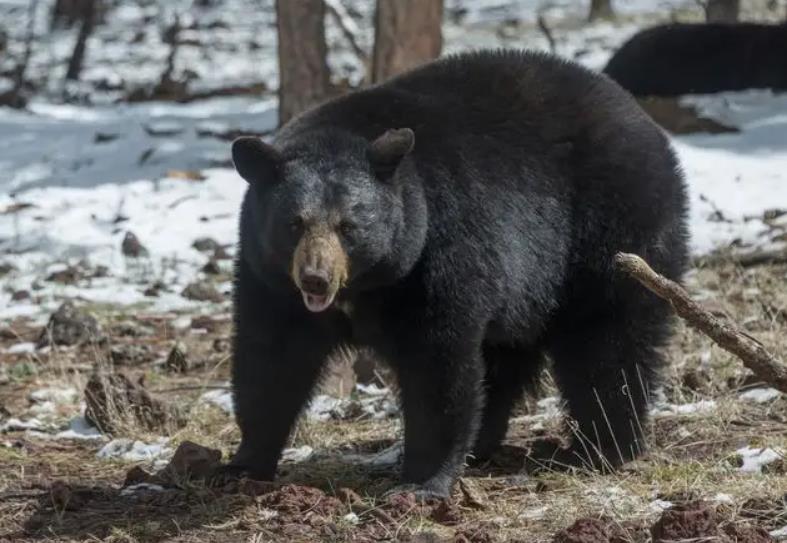black bear
IUCN
LCBasic Information
Scientific classification
- name:black bear
- Scientific Name:Ursus thibetanus,Moon bear,bear,black blind man
- Outline:Carnivora
- Family:Carnivora Ursidae
Vital signs
- length:120-190cm
- Weight:Adult male 60-220kg, female 50-125kg
- lifetime:25 years old
Feature
Black bears have excellent tree climbing abilities
Distribution and Habitat
Black bears were historically widely distributed in tropical, subtropical and temperate regions of Asia (including large islands close to the mainland), but now they are only fragmented in parts of East Asia, Southeast Asia, South Asia and Central Asia, including Russia, Japan, and North Korea. , South Korea, China, Vietnam, Laos, Cambodia, Thailand, Myanmar, Bangladesh, Bhutan, Nepal, India, Pakistan, Afghanistan, and Iran. In our country, black bears are currently mainly distributed in the Northeast, Central China and Southwest (the Greater Hengduan Mountains, the Yunnan-Guizhou Plateau to the Himalayas). The black bear populations in East China and South China have become highly fragmented and sporadic. On the offshore islands, the Central Mountains of Taiwan are still There are wild populations distributed, but the original populations in Hainan are close to extinction or have become extinct.
Appearance
Black bears are large ursids with mainly black fur. Males have a head and body length of 120-190cm and a weight of 60-200kg; females have a head and body length of 110-150cm and a weight of 40-140kg; tail length is 5-16cm. The overall coat color is black, with brown or golden coat color variations occasionally seen in Southeast Asia. The head and snout are gray-black to brown-black. The neck of an adult individual has dense long black hair, forming one or two semicircular circles of obvious bristles, making its neck look very thick. The most striking morphological feature is a conspicuous "V"-shaped white spot on the chest. Because its shape is similar to a crescent moon, black bears are sometimes called moon bears. The size and shape of the white spot on the chest is individual-specific and therefore can be used as a marker for individual identification of black bears. The black bear has a strong and sturdy body, short but strong limbs, wide feet and long claws, and rounded
Details
Black bears, also known as Asiatic black bears, were historically placed in a separate genus <Selenarctos>. A wild hybrid between a black bear and a sun bear has been recorded in Cambodia. Black bears use a variety of forest habitats within their distribution area, including broadleaf forests and coniferous forests. The altitude span of their activities can range from close to sea level to 4000m, and they may occasionally appear in open meadows at high altitudes. Black bears are omnivores, and their feeding habits can vary greatly depending on the season and food resources. The diet includes tender, succulent plants in the spring, insects and the fruits of trees and shrubs in the summer, and various nuts in the fall.
Black bears have excellent tree climbing abilities. The strong nuts in the broadleaf forests in autumn play an important role in the nutritional intake of black bears in autumn, helping them to accumulate enough fat stores for overwintering. Black bears will search wild and captive bee hives for honey. They will also scavenge when they encounter the carcasses or remains of large wild animals. Black bears occasionally prey on domestic animals. In addition, they often enter farmland to eat crops, causing considerable crop losses to local residents and causing serious human-bear conflicts. In areas with cold climates (the north or high altitude areas above 2500m), when food resources are scarce in winter, both male and female black bears will look for caves, rock crevices or tree holes to hibernate. They can enter the cave as early as late October in autumn and recover as late as early May in spring. But adult males can remain active throughout the winter.

Black bears are solitary animals and their estrus period is from June to July. Female animals give birth in hibernation caves from November to March of the following year. Females give birth for the first time when they are 4-5 years old, and then give birth to 1-3 babies every 2 years. Groups of mothers and cubs consisting of 2-4 individuals can often be seen in the wild. Mother bears with cubs are extremely aggressive. Adult black bears that are frightened or injured will launch violent attacks on humans, causing serious casualties. Within its distribution area, black bears are one of the main targets of human poaching in order to obtain bear meat and bear paws for the illegal game trade, body parts (such as bear bile and bear oil) for use in traditional Chinese medicine, and live cubs for for illegal domestication and trade. In areas with frequent human-bear conflicts, retaliatory hunting and poisoning are also very common.








